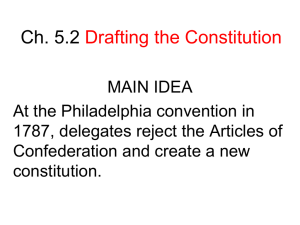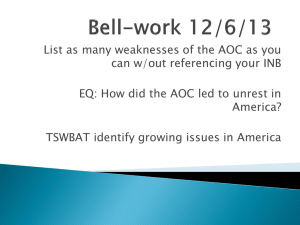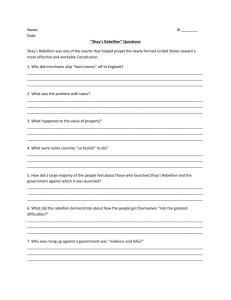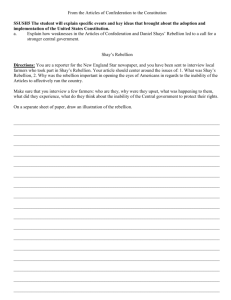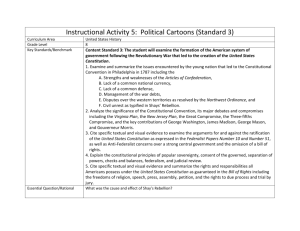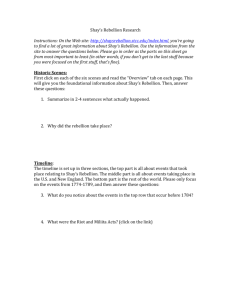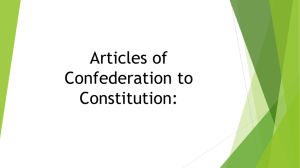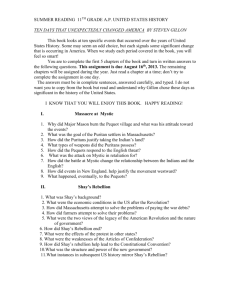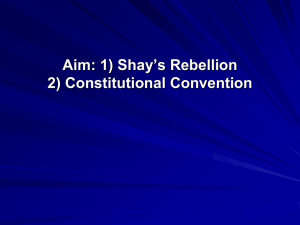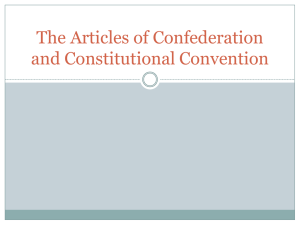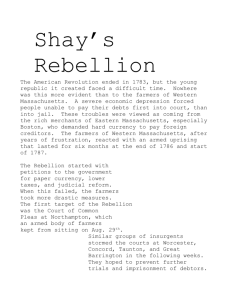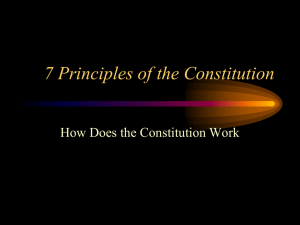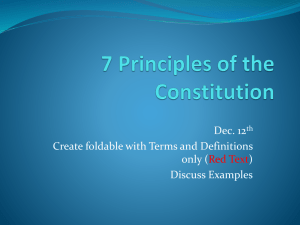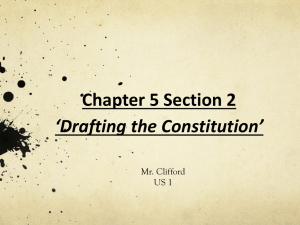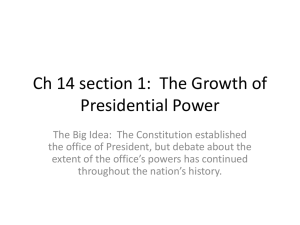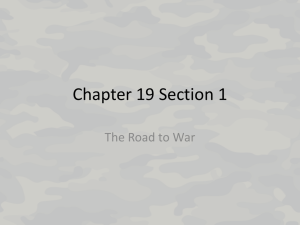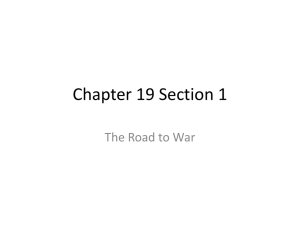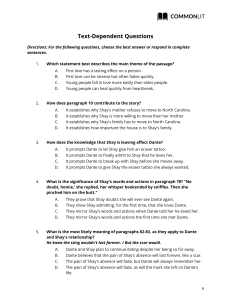Drafting the Constitution
advertisement
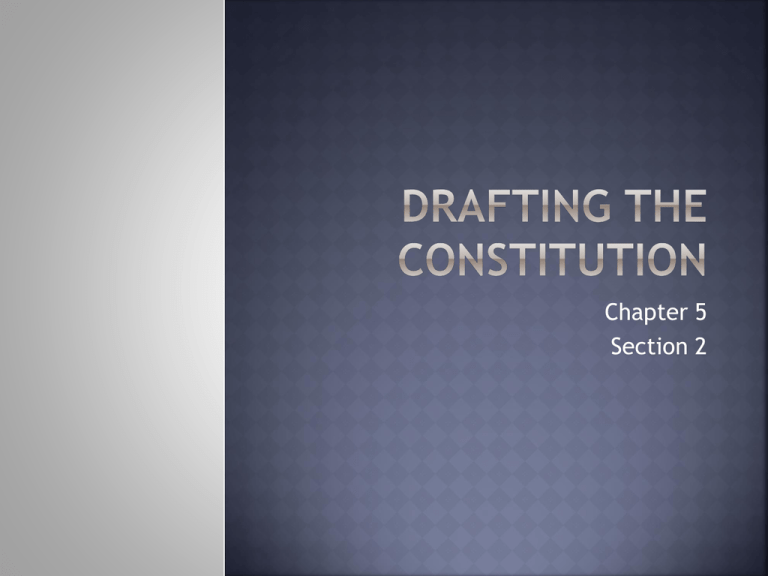
Chapter 5 Section 2 Shay’s Rebellion: Daniel Shay; Revolutionary War vet returned to his farm in debt Summer 1786 small farmers like Shay demanded the courts be shut down so the farmers could pay off their debt 1787 Shay leads 1200 men to Springfield, MA to shut the banks down themselves Militia disperse the farmers; clearly something is wrong Effects Panic and dismay throughout the country All states have poor farmers… Will rebellions spring up across the country? George of Shay’s Rebellion: Washington speaks out: “What a triumph for our enemies…to find that we are incapable of governing ourselves” Obviously time to look at new kind of government Major issue with country is inter-state trade Problems with taxes states were putting on other states goods Disagreements about navigation rights Shay’s Rebellion provides spark needed to have states send delegates to address the issue Convention 1787 All states but Rhode Island send delegates to Philadelphia Quickly the delegates give up the idea of “fixing” the Articles of Confederation and start drafting a new government Madison’s Virginia Plan: Bi-cameral legislature Represented by states population Small states object vigorously!!! William Paterson’s New Jersey Plan: Single house legislature Each state had an equal vote The Great Compromise: Roger Sherman of Connecticut Bi-cameral legislature Upper House (Senate) all states represented equally Lower House (House of Reps) states represented by size of population Should slaves be considered in the population? South wanted to count them so they would have more representation in the House North disagrees; without slaves being counted the North would have more representation 3/5 Compromise Eventually agree that 3/5 of the slave population would count for a states total population Division New gov’t federalism- divided power between the states and national gov’t Enumerated powers: powers given to the national gov’t Foreign affairs, national defense, regulating trade, coining money Reserved Powers: powers kept by the states of Powers: Education, marriage laws, regulating trade within the state Both can establish taxes, and establish courts Separation 3 Branches of Government Legislative Make laws Executive of Powers: Enforce laws Judicial Interpret laws
